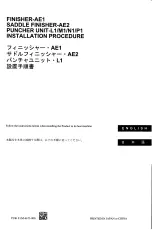
Chapter 3
– Mechanical & Electrical Installation
22
FT742-DM (4-20mA)
– Sensors
- User Manual
3.3 Lightning, Surge & EMI Protection
The FT742-DM is specifically designed for meteorological use. When installing the sensor, it is essential to do so
in a way that protects the sensor in the event of a lightning strike (if the site is deemed to be at risk). Since peak
current levels during a lightning strike can be in the order of 200kA, applying the correct grounding technique is
critical to ensuring current is diverted to ground in a controlled manner.
The sensor can survive a properly diverted lightning strike, so lightning interceptors and secondary protection
should be used. The sensor should be positioned beneath the lighting interceptor rod, within a 45° protection
zone. The recommended clearance between sensor and interceptor is a minimum of 30x diameter of the
interceptor material.
The standard FT742-DM sensor has a hard-anodised top surface within the connector column housing (see Figure
9
When used with the plastic pipe insert tool this provides a partial non-conductive barrier that prevents electrical
surges from striking the sensor via the mounting. This may not provide adequate grounding of induced electrical
surge currents. The user should consider the required lightning protection system
.
The FT035 grounding
accessory fits within the connector support column and will provide the sensor with improved lightning
grounding/conduction when fitted with an appropriately grounded metallic pipe. The grounding accessory fits
between the inner wall of the sensor and the outer wall of the pipe.
The correct grounding method to apply will depends on how the rest of the equipment has been installed. The
following flow chart may help determine which sort of grounding should be applied for the application:
* The recommended FT solution.







































